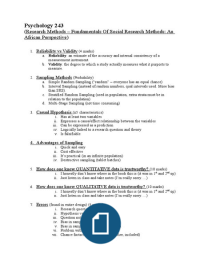Exam (elaborations)
Psychology 243
- Course
- Institution
Short notes about the tests and 1st op exams. If your 1st op exam is anything like ours (2015), these notes should help a lot - especially 3rd and 4th term. Each set of notes has 2 - 4 pages. These were the exact questions I received. Go buy the Psychology 3rd Year Bundle though! =D
[Show more]



